War under the roof of the world
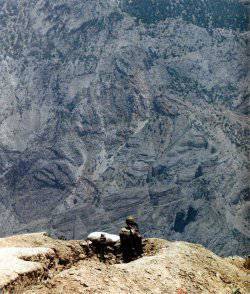 The territory of Tajikistan, on 93 percent representing a mountain range, from the beginning of 1992, turned out to be a theater of unusual military operations. Guide to fighting in the mountains proves that the complete defeat of the enemy is achieved only by a decisive, daring and swift offensive. But in all Tajikistan has developed a different scenario. The passive actions of government troops and the lack of forces for the development of an offensive among the opposition troops — these are two conditions that gave local fighting, as one of the military experts accurately put it, the character of a “swing”. In the afternoon, the high-rise was repulsed, at night - surrendered, in the afternoon - repulsed ... The war acquired a focal character, and the areas controlled by the parties often alternated.
The territory of Tajikistan, on 93 percent representing a mountain range, from the beginning of 1992, turned out to be a theater of unusual military operations. Guide to fighting in the mountains proves that the complete defeat of the enemy is achieved only by a decisive, daring and swift offensive. But in all Tajikistan has developed a different scenario. The passive actions of government troops and the lack of forces for the development of an offensive among the opposition troops — these are two conditions that gave local fighting, as one of the military experts accurately put it, the character of a “swing”. In the afternoon, the high-rise was repulsed, at night - surrendered, in the afternoon - repulsed ... The war acquired a focal character, and the areas controlled by the parties often alternated.Poorly trained, poorly equipped government soldiers would hardly have been able to resist opposition fighters, if not for the numerical superiority: 1500 – 2000 versus 700 – 800. But members of the armed forces of the UTO in conducting operations, the lack of people successfully compensated for the skill. Official government sources have repeatedly stated that mercenaries from eastern countries are fighting on the side of the opposition. The Tajik military testifies that, in the ranks of the militants, the UTO have not done without a foreign presence. Only usually they were instructors from Afghanistan, Saudi Arabia and some other eastern countries, and not just "soldiers of fortune."
Fought in the mostly natives of Tajikistan. The backbone of the armed opposition groups were those who first took weapon back in the 1992 year and since then has not let it go. Quite a few were among the militants who fled in 92 from the flames of the civil war in the very Afghanistan. In various ways they got into retraining camps, and then returned to their homeland with weapons. The UTO fighters did not disdain by local residents, and sometimes by captured soldiers of government forces.
Who is higher, he won
The basic law of fighting in the highlands is simple: who is superior, he won. From an analysis of the actions of the conflicting parties, it can be seen that the participants in the inter-Tajik confrontation learned him well. Both those and others always sought to seize the dominant heights with the subsequent exit to the flank and rear of the enemy. However, there were serious differences in the tactics of the actions of the government forces and opposition units.
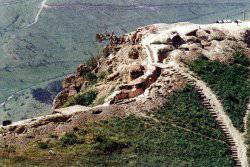 The first sought to create at the site of concentration of basic efforts, at least a tenfold superiority in forces and means. The second longer relied on the "will of God" and morale. As a result, the territory captured by the militants for several days, the government troops won back for two or three months. At the same time, the troops of the Ministry of Defense of the Republic of Tajikistan were replacing the detours of the landing party, which, however, performed the task very, very rarely due to the lack of interaction with the main forces. Often, the troops did not know that the landing force was operating ahead, and as a result, part of it was destroyed by the opposition, the rest were scattered and captured.
The first sought to create at the site of concentration of basic efforts, at least a tenfold superiority in forces and means. The second longer relied on the "will of God" and morale. As a result, the territory captured by the militants for several days, the government troops won back for two or three months. At the same time, the troops of the Ministry of Defense of the Republic of Tajikistan were replacing the detours of the landing party, which, however, performed the task very, very rarely due to the lack of interaction with the main forces. Often, the troops did not know that the landing force was operating ahead, and as a result, part of it was destroyed by the opposition, the rest were scattered and captured.The Tajik opposition most often used small battle groups in combat. Fire weapons: PC, SVD, RPG and two or three AKM. Preference was given to Soviet-made weapons and machine guns caliber 7,62 mm. In 1996, the UTO fighters switched to active hostilities at night: it seems they were equipped with night vision devices. It is also interesting that almost all the attacks and successful operations of the opposition began on Thursday night, since, according to the Qur'an, to receive a mortal wound in the war with the infidels is not just an honor: regardless of sin, you go straight to heaven.
In the conditions of the mountainous terrain with a peculiar relief, small units can hold back many times superior enemy forces. As one Tajik major put it, very often hostilities in the Pamir region took on the character of a “war of blocs”. The opposing sides were fixed on the neighboring skyscrapers and lazily fired. Occasional forays were made on both sides. Most often, they pursued a single goal: to knock down the enemy from the next high-rise and gain a foothold there by himself. It also happened that the militants of the Tajik opposition in the solution of this task did not attract significant forces. The blocks controlling the neighboring skyscrapers identified human 2 – 3. After the battle, the "seconded" returned "to the place of permanent service."
Psychological war
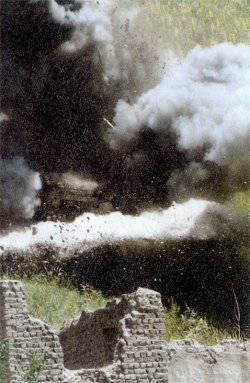 The main thing in which government troops lost to opposition troops was fighting spirit. “The spirits,” the familiar Tajik colonel asserts, “have“ alla akbar ”. Our fighters have nothing. ” In parallel with the hostilities, the Tajik opposition did not forget about the psychological treatment of the enemy. Some of the members of the armed groups of the UTO fought in black uniforms, wore long beards and hair. On the government side, they were called “black storks” and were confident that they were mercenaries. Tajik officers also talked about suicide bombers who prefer the white uniform. Legends that grow into successful actions of those or other units that have a kind of symbolism, akin to the best propaganda. Meanwhile, the Tajik opposition did not forget about the usual agitation. A megaphone with an amplifier, offering soldiers to surrender and go over to the enemy, was not a wonder here either.
The main thing in which government troops lost to opposition troops was fighting spirit. “The spirits,” the familiar Tajik colonel asserts, “have“ alla akbar ”. Our fighters have nothing. ” In parallel with the hostilities, the Tajik opposition did not forget about the psychological treatment of the enemy. Some of the members of the armed groups of the UTO fought in black uniforms, wore long beards and hair. On the government side, they were called “black storks” and were confident that they were mercenaries. Tajik officers also talked about suicide bombers who prefer the white uniform. Legends that grow into successful actions of those or other units that have a kind of symbolism, akin to the best propaganda. Meanwhile, the Tajik opposition did not forget about the usual agitation. A megaphone with an amplifier, offering soldiers to surrender and go over to the enemy, was not a wonder here either.Quite often, in order to sow panic in government units, members of the armed units of the UTO opened fire from all types of weapons with inaccessible distances for bullets. "Under the guise of" a pair of snipers was selected to the positions of the Tajik army and already opened aimed fire. If the snipers were calculated, then only after a while, after the soldiers had fallen on the enemy, which was unattainable for them, losing their comrades. And it also happened that government units retreated in panic, not understanding anything.
In general, the personnel of the government forces were distinguished by laxity and low execution. There have been numerous cases of refusal to go on the attack, unauthorized departures from roadblocks, sleeping in combat guard. Militants, on the contrary, without an order not to leave items. The reason is simple - for leaving the position without permission, not only the deserter himself but also his family were shot.
Communication and hidden control
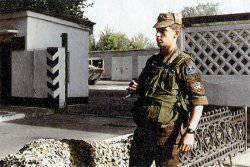 In the government forces, communications were organized by working in the directions and in the control centers at the radio stations P-142. Directly in the divisions used the radio radio P-105, P-107, P-109, as well as P-163.
In the government forces, communications were organized by working in the directions and in the control centers at the radio stations P-142. Directly in the divisions used the radio radio P-105, P-107, P-109, as well as P-163.Signalman-Tajiks claim that the R-142М has recommended itself best in the mountains, police stations up to 6 kilometers in direct visibility and P-163. Extremely bad - P-105 and other derivatives of it.
More or less, the SUV was organized at the main stations and on the routes between the P-142, and then childishly. Type "send one marker and five pencils," although the location tried to indicate the "menagerie" and "snail." At the same time, the cards with the coding did not change for a long time, as a result, in two or three weeks the UTO fighters easily deciphered the army negotiations.
Militants also worked on the equipment with scanning frequencies. And SUV was carried out in a simple reliable way like: “Ahmet, go to the fifth task, Said, stay on the fourth position ...” This can only be decrypted after the battle.
Mine war
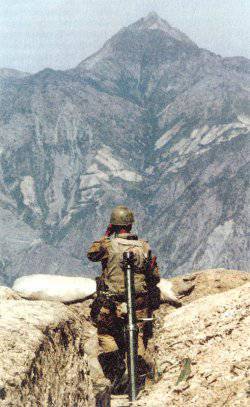 The mine war in Tajikistan received special attention. For large-scale mining of both sides resorted. However, the efforts of the opposition were more productive, because it was she who used guerrilla tactics.
The mine war in Tajikistan received special attention. For large-scale mining of both sides resorted. However, the efforts of the opposition were more productive, because it was she who used guerrilla tactics.Typically, mined roads and very rarely some strategic facilities. Usually mine or landmine were installed under the left caterpillar, if the gorge to the right, and vice versa. In this case, when undermined, the vehicle turned around and blocked the roadway, making it difficult to evacuate the dead and wounded and to drop the car off the road. Mining in this way was often accompanied by the organization of an ambush, and the installation of two or three land mines a few dozen meters from each other created the impression of a solid mining route.
The most popular were remotely controlled or delayed land mines from two or three artillery shells, where anti-personnel mines of Soviet and Italian production were used as a detonator.
In the absence of specialists and means of mine clearance, the Tajik military often improvised. Among the most unique methods of mine clearance are noted:
• Run along the whole route of a large herd of cattle (did not catch on);
• soldering bulldozer. In a deranged state on a bulldozer with a shovel to the dump, he was sent for demining. With the explosion, the shovel flew off, and the peasant, who woke up the next morning, wondered for a long time how he had managed to spoil the collective farm machinery;
• using a system of ropes and blocks, the usual conveyor turned into a remotely controlled 20 – 25 meters from a distance.
However, the main and most often used way to avoid mines remained a workaround. Despite the fact that most of the mines and land mines were set to non-recoverability, the loss of personnel from a mine war was insignificant. But the very presence of mines significantly reduced the rate of attack.
"Pinwheel" in the sky of the Pamirs
Due to the impossibility of using helicopters in many areas of motor transport, the main burden was placed on the delivery of personnel, weapons, ammunition, food, as well as air reconnaissance, bombing and air support from the advancing troops.
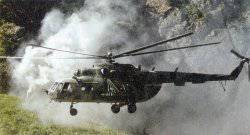 The MO RT helicopter fleet in 1996 year consisted of four Mi-8 and three Mi-24. During the fighting in Tavildara district at the end of May, one of the Mi-8 had the tail boom cable broken and it fell in the area of the Khaburob Pass from a height of 15 – 20 meters. Despite the threefold knocked down car, due to the high snow cover the crew was not injured. However, the “spinner” could not be restored, and evacuation from 3252 meters was impossible. Therefore, with the Mi-8 removed everything they could, and the skeleton was burned.
The MO RT helicopter fleet in 1996 year consisted of four Mi-8 and three Mi-24. During the fighting in Tavildara district at the end of May, one of the Mi-8 had the tail boom cable broken and it fell in the area of the Khaburob Pass from a height of 15 – 20 meters. Despite the threefold knocked down car, due to the high snow cover the crew was not injured. However, the “spinner” could not be restored, and evacuation from 3252 meters was impossible. Therefore, with the Mi-8 removed everything they could, and the skeleton was burned.It should be noted that the pilots were pilots, as they say, from God. On the day, Tajik helicopter pilots had to fly out to 10 – 15, sometimes changing helicopters like gloves due to the lack of manpower. Their working day, as a rule, began at five in the morning by attacking a bomb's attack on targets that had been specified the night before. Before five o'clock in the morning, work on these goals was impractical because of the low position of the sun above the horizon line: the long shadows cast by mountains into valleys and ravines made goals difficult to distinguish. Then from 6 to 11 there was a transfer of personnel and material and technical means to the corresponding directions. From 11 to 16 hours the flights stopped: on many mountain tops there was snow, because of it the mountain slopes, plateaus and ravines were heated unevenly, there were ascending currents of different forces that could overwhelm the helicopter. Since 16 hours before sunset flights resumed.
The opposition has not received official confirmation of the presence of helicopters. Although sometimes the rapid transfer of reinforcements to threatened directions without using aviation would be impossible.
Born of revolution
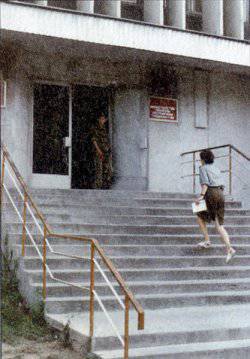 An analysis of the fighting in the Priamir region would be incomplete without taking into account the balance of forces and means of both parties. The armed forces of official Dushanbe 23 February 1998 will celebrate the next anniversary of their creation. Manned by officers only 60 percent, they account for slightly less than ten thousand troops. So small by Russian standards, the armed forces are quite enough for a republic that is comparable in size to the territory of a large region of the Russian Federation, and in population by three times inferior to Moscow and its suburbs. However, until recently, there was no military doctrine of the Republic of Tajikistan and the concept of building the armed forces was not developed.
An analysis of the fighting in the Priamir region would be incomplete without taking into account the balance of forces and means of both parties. The armed forces of official Dushanbe 23 February 1998 will celebrate the next anniversary of their creation. Manned by officers only 60 percent, they account for slightly less than ten thousand troops. So small by Russian standards, the armed forces are quite enough for a republic that is comparable in size to the territory of a large region of the Russian Federation, and in population by three times inferior to Moscow and its suburbs. However, until recently, there was no military doctrine of the Republic of Tajikistan and the concept of building the armed forces was not developed.However, referring to the problems of the army of Tajikistan, one should not forget that these are practically the only armed forces in the republics of the former Soviet Union, formed not on the basis of SA units and formations, but from partisan detachments. The Tajik army did not inherit either battle flags, equipment, armament, or military camps or parks. Weapons and military equipment were purchased by Tajikistan from other states, vocational schools were adapted to the barracks and headquarters. A Ministry of Defense took the building of the Republican Civil Defense Headquarters.
However, the current problems of the Tajik army are very similar to the problems of the armed forces of the neighboring republics. One of the main ones is insufficient financing. So, in 1995, real budget financing was about 60 percent of what was planned. And because a number of programs for the acquisition and logistics of parts and divisions was not implemented. One of the reasons for the insurrection of the 1 th brigade of the Ministry of Defense was just the weak material and technical support of this military unit.
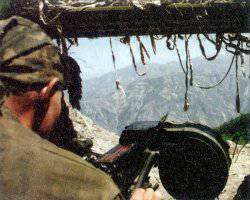 A year and a half ago, Tajik deputies assigned President Emomali Rakhmonov, who is also the commander-in-chief of the country's armed forces, to the rank of army general. The abundance of general positions in the local ministry of defense causes many to smile. Russian military experts have repeatedly advised their Tajik colleagues to reduce the administrative apparatus by about a third, to bring it in line with the organizational and staff structure. However, such proposals of understanding were not met by the local military.
A year and a half ago, Tajik deputies assigned President Emomali Rakhmonov, who is also the commander-in-chief of the country's armed forces, to the rank of army general. The abundance of general positions in the local ministry of defense causes many to smile. Russian military experts have repeatedly advised their Tajik colleagues to reduce the administrative apparatus by about a third, to bring it in line with the organizational and staff structure. However, such proposals of understanding were not met by the local military.At the same time, the Tajik army is experiencing a catastrophic shortage of real military experts in the units. Moreover, it will be possible to rectify the situation with young officers only after a few years. Currently, about three hundred future Tajik officers study in Russia. However, their release must wait, but for now ... Try to lure officers from neighboring states? But who will serve for 40 dollars a month? One thing remains - to actively use retirees, after retirement, even before the collapse of the Union, settled in Dushanbe. In one of the departments of the Ministry of Defense, a seventy-one-year-old colonel pulls a service strap, and in the next, a fifty-seven year old. And no one here seems surprising.
Dismemberment
After the creation of the Presidential Guard Brigade, or more precisely, after the 1 Brigade of the rebel Colonel Makhmud Khudoyberdiyev was transferred to the Presidential Guard, the Ministry of Defense lost more than half of the weapons and equipment and the most militarily prepared unit. Even the opponents of Khudoiberdiyev recognized and admit that the hero of the local Popular Front, in the past the captain of the Soviet Army, managed to establish in his unit iron discipline and order, in a short time turning it into the most efficient in the army. Now, only about a third of heavy weapons and military equipment are concentrated in the Ministry of Defense. The rest is scattered throughout the Ministries of the Interior, Security and Presidential Guard.
By the way, divisions of all law enforcement agencies of Tajikistan took part in the hostilities in the Pipamir region. However, as is often the case, it was difficult for the three different departments to agree among themselves. The lack of a unified command and coordination of efforts of all security forces played only into the hands of the opposition.
 In parallel with the formation of the army of official Dushanbe, opposition combat units were also created. The main formations of the armed Tajik opposition were stationed in the territories of the Afghan provinces of Badakhshan, Tahor and Kunduz (up to 3 thousand) and in Tajikistan (GBAO, Garm group of districts, Romitsky gorge, Shurobad district of Khatlon region, more than 2300 people). In the training camps in Pakistan and Iran, there were up to 200 people.
In parallel with the formation of the army of official Dushanbe, opposition combat units were also created. The main formations of the armed Tajik opposition were stationed in the territories of the Afghan provinces of Badakhshan, Tahor and Kunduz (up to 3 thousand) and in Tajikistan (GBAO, Garm group of districts, Romitsky gorge, Shurobad district of Khatlon region, more than 2300 people). In the training camps in Pakistan and Iran, there were up to 200 people.The most prepared part of the movement numbered thousands of militants in 2,5-3. The total number of armed formations, taking into account the existing underground in the territory of the Republic of Tajikistan, foreign advisers, Pamir groups oriented towards DIWT, as well as militant training camps was approximately more than five and a half thousand people.
Meanwhile, the complete victory of any of the parties was hardly possible. Neither the government troops, nor the opposition troops had enough forces and means to not only expand the zone of influence, but also to establish full control over the conquered territories, to retain their power there. The war "to the bitter end" could last forever.
Major-General Nikolai Shcherbatov, deputy minister of defense of the republic, once mentioned that about half of Tajik youths evade service. According to unofficial information, the real numbers of draft dodgers are much higher. In the summer of 1996, young men of military age in Dushanbe were wary of going outside. It was rumored that raids were held in the city. The Ministry of Defense, of course, did not confirm this information.
The future of the Tajik army is as uncertain today as the future of the republic. It is difficult to imagine how the integration of the armed groups of the opposition into the government armed forces will proceed. It is not easy to imagine a bearded Tajik mojahed who had been trained in a camp somewhere near Kunduz, in line with the current soldiers of the government forces. However, any other path will lead to the collapse of Tajikistan and further bloodshed.
Having analyzed the experience of the hostilities of yesterday’s opponents, the specialists came to the conclusion that in order to fight here not by number but by reduction, special units with mountain and mountaineering training are necessary. Such in Tajikistan are only planned. In the government forces they dream to have more mortars and light mountain guns. They say that it is time to change the machine guns for Kalashnikov machine guns, to increase the number of snipers and sappers. It is possible that sometime when Tajik officers, having passed the baptism of the past in the Amur region, including from among the former oppositionists, will occupy ministerial chairs, the army of this republic will have its own organizational structure.
Information